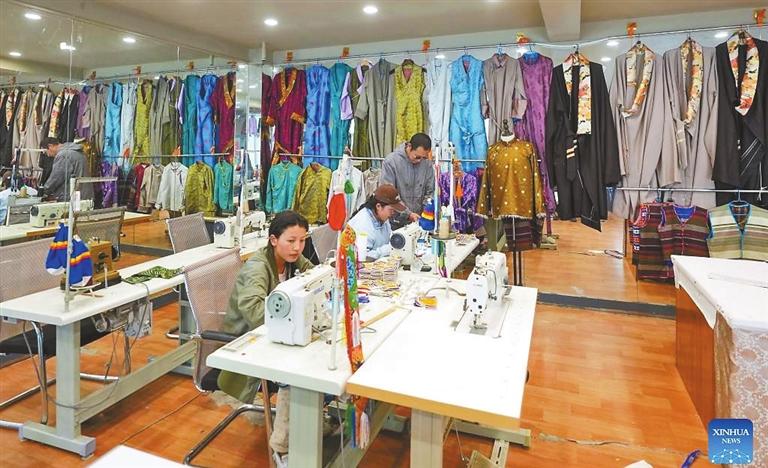
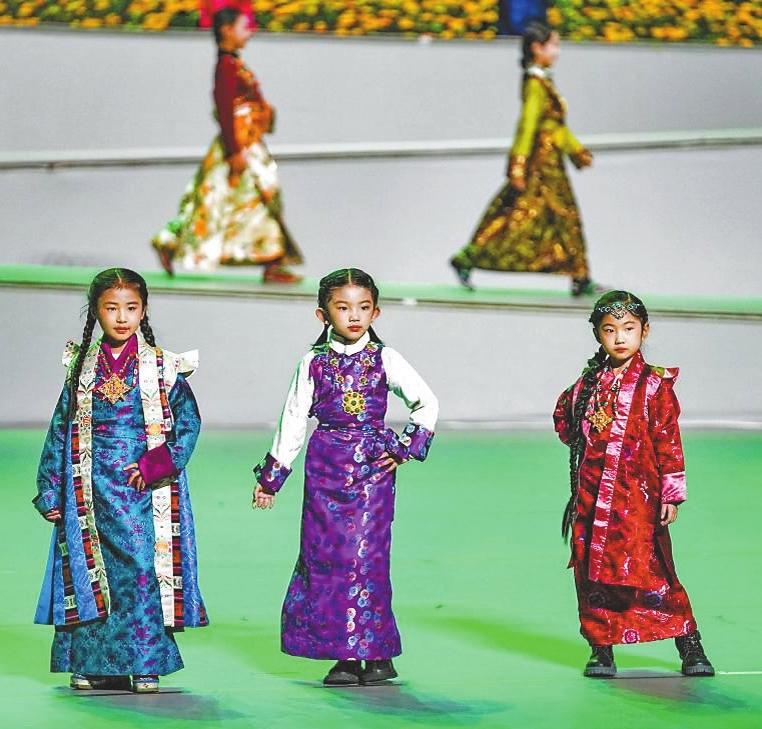
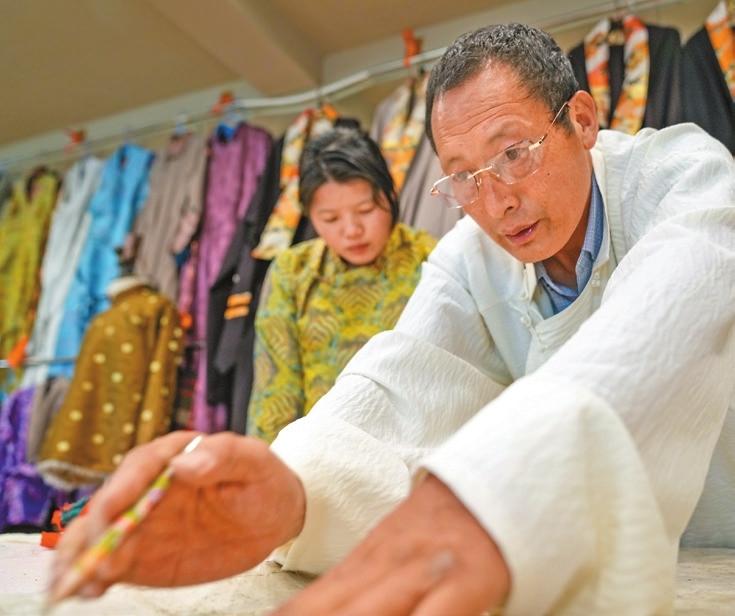
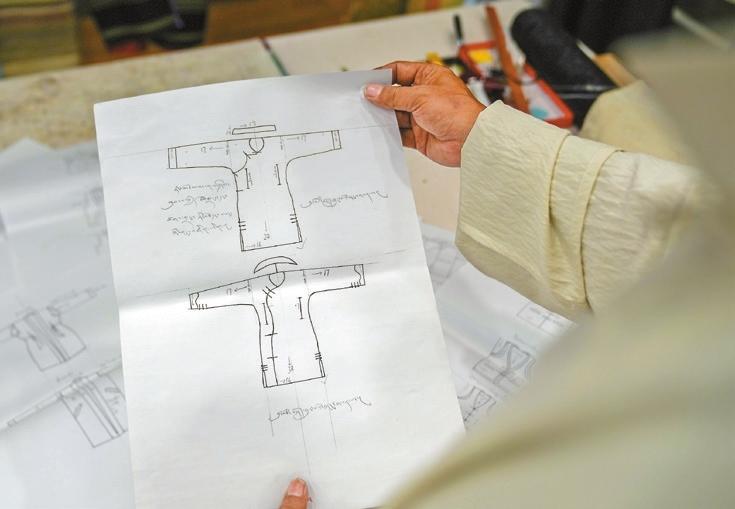
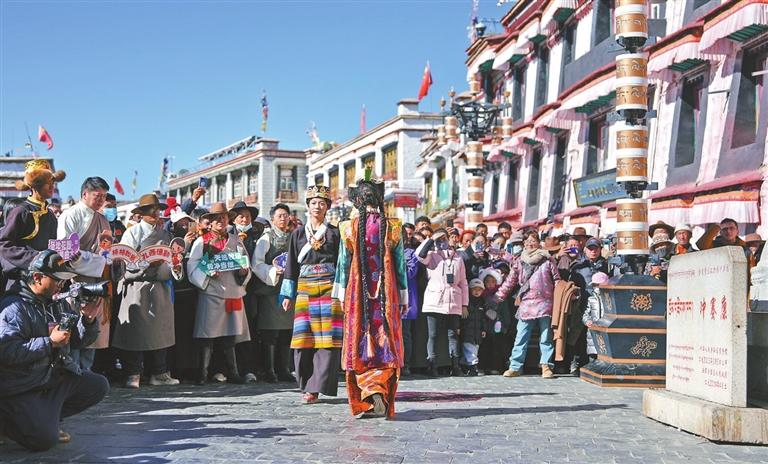
TRADITIONAL Tibetan costumes, dating back centuries, are still worn and admired today for their rich styles and intricate details. Of all traditional Tibetan outfits, those from the regional capital Lhasa stand out with distinctive features such as a wide waistline, long sleeves and a dazzling array of decorations. The costumes not only reflect Tibetan aesthetics but are also adapted to the local environment and nomadic lifestyle. In 2018, the Lhasa‑style costume was listed as one of the intangible cultural heritages of Xizang Autonomous Region. Born in 1965 in Baxoi County, Qamdo, Losang Monlam is an inheritor of this craft who passes it on to the young at the Sholdo Pal traditional handicrafts school in Lhasa. He began as an apprentice at 13 and went to Lhasa to study costume making systematically in 1983. “Then Tibetan costumes had limited styles and colors,” he recalled. Over a long career of making costumes and teaching, Losang Monlam delved into the traditions of Tibetan dress across different regions, perfecting his tailoring and sewing skills. In 2022, he was named a Lhasa Master of Arts and Crafts. To date, the 60‑year‑old has trained more than 100 apprentices and has worked on compiling textbooks and building a database of Tibetan clothing. Some of his pupils have also blended traditional styles with more modern designs.(Xinhua) | 
